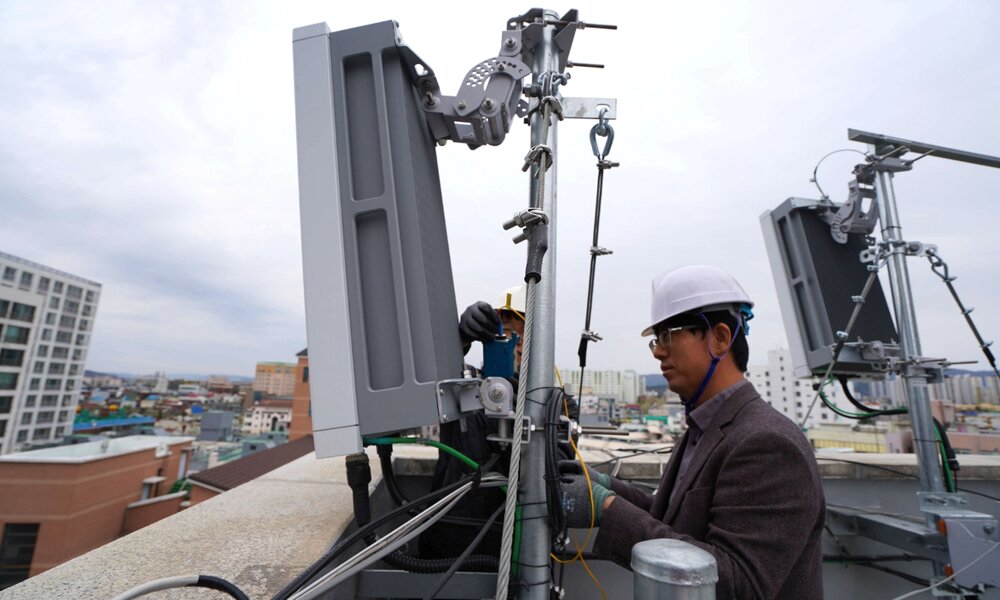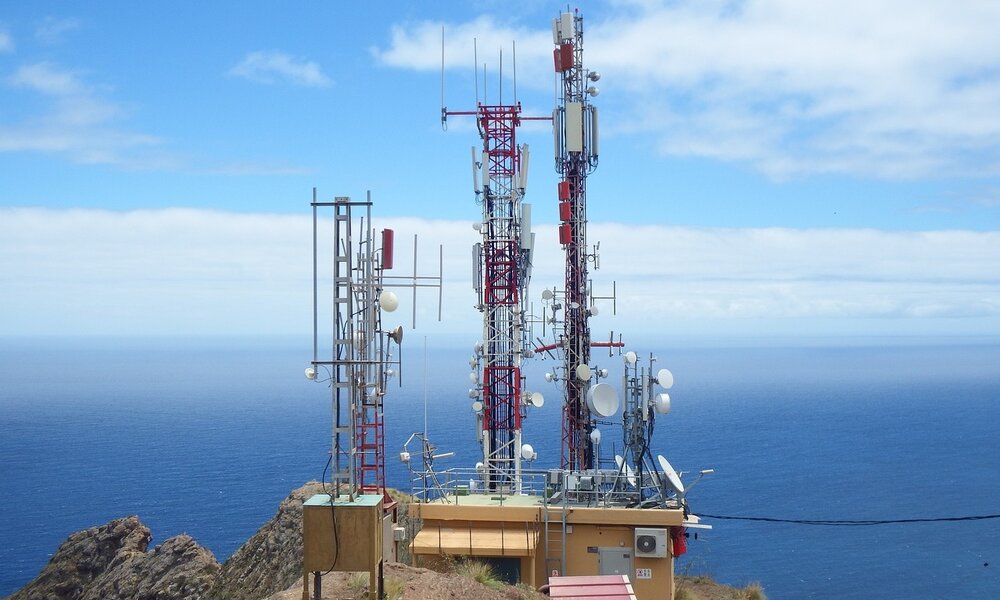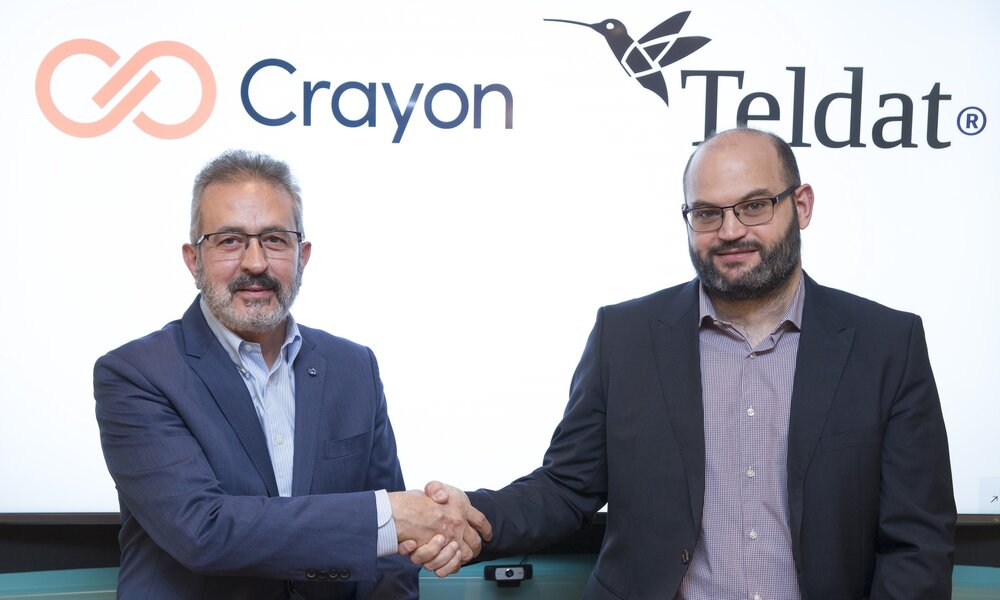
It is estimated that in sectors such as health, education, tourism, agriculture or transport, 5G will have an economic impact of more than 155,000 million euros between now and 2030. In the economic development of a technology that we have been hearing about for years, it will have a specific weight and increasingly important, the deployment of private networks, which allow companies, as explained Ivan Rejondirector of marketing and institutional relations at Ericsson, “access “the best features in terms of latency, speed, security and flexibility in the use of resources”.
For now, however, deployment is slow. Only last August, the Government announced that the Ministry of Economic Affairs and Digital Transformation reserved a package of radioelectric frequencies so that companies could develop their own mobile connection networks with 5G technology. In this case, the interested companies could begin to deploy their own private networks, apart from the operators in the 2.3 GHz band, a total block of 100 MHz, of which 20 MHz will be allocated to the development of this type of networks.
At the time of an announcement that had the support of the CNMC (although it considered that the reserved spectrum was insufficient), the Government encountered some opposition from the three large telcos operating in Spain, who considered that this This decision could be seen as a direct threat to their business, since they understood that some contracts with large companies could be jeopardized if they decided to deploy their own networks. They also counted that this decision would open the door to the entry of new operators and, therefore, to more competition.
Six months later, however, some like Orange have qualified their position. Javier Olveira, Presales director at Orange Spain, tells us that “the market for virtual private networks, as happened in the past with other technologies such as SD-WAN, is susceptible to the entry of other actors that open up the range of possibilities that customers can to choose. Our vision in the medium and long term is that, as usually happens in these cases, there will be a phase of proliferation of diverse proposals and later a gradual consolidation”.
For your part Javier Garcia, director of network deployment and optimization at Vodafone Spain, considers that although the future is hopeful, the first steps are still being taken. In this sense, he indicates that the current demand for this type of solution is relatively modest and focused on very specific sectors. However, it estimates “significant growth in this year 2022 and next 2023 due to the arrival of European funds, especially in the components of mobility, 5G, modernization of the industry and in science and innovation, which could mean some 30,000 million of euros of financing.
Both companies, as Telefónica is also doing, are already bringing their 5G private network solutions to companies. In the case of Vodafone, García affirms that if his proposal “comes to solve needs for solutions in which, for example, privacy in communications, high data capacities and very low latencies are essential, such as the development of digital twins for the optimization of processes, or the control of remote systems in real time”. In the case of Orange, Olveira assures that they are receiving more and more queries and “requests for collaboration focused on the segments of large companies and public administrations, in areas such as smart city management, emergency and mission-critical services.”
From Amazon, to Nokia, Cisco or Ericsson: the other private 5G players
But as we will see below, the large telecommunications operators are not the only ones interested in taking over a business that promises to become a before and after for the industry. In this proliferation of proposals that the person in charge of Orange spoke about before, we find, for example, a giant like AWS. The technology company announced a few weeks ago the launch of AWS Private 5G, a complete platform with which companies can create and manage private networks under 5G coverage.
as detailed Xavier Ramirez, AWS senior developer advocate, with this service (which is currently not available in Spain), “customers specify where they want to create a mobile network and the network capacity necessary for their devices. AWS then delivers and maintains the small cellular radio units, servers, 5G core and radio access network (RAN) software, and subscriber identity modules (SIM cards) needed to set up a 5G network. private and connect devices”.
Does this business model collide with that of the operators? It may do so in some aspects, such as in everything related to providing the hardware to the company that contracts the service, but in many cases what opens up both with Amazon and with other companies is a collaborative scenario. In this sense, Ramírez indicates that in many cases what they propose is work with operators “to provide a technological platform (the AWS cloud itself) for their 5G networks that allows them to expand their network and connectivity capabilities, increase monetization opportunities and offer new services on those networks to their customers”.
Before AWS, however, two Nordic players have been positioning their offer in Europe for some time and collaborating with all kinds of telecommunications companies: Ericsson and Nokia. A world leader in the development of essential 5G patents and in the deployment of networks, the head of Ericsson indicates that they are currently working on different use cases in the hands of their clients: “by being based on global standards, 5G private networks guarantee compatibility with existing solutions (for example, 4G, NBIoT, etc.) and under development, enabling economies of scale, cost efficiency and access to a very broad innovation ecosystem. They are not only the future, they are already the present”, he affirms.
It’s something that agrees James FiguerasTechnical Director for Companies, Spain and Portugal of Nokia, who In addition, they emphasize the reason for the need to deploy this type of network: “private connectivity in companies that currently exists, such as LAN cabling and IT-based wireless systems, have proven to be clearly insufficient. The connectivity that is needed in these environments must be complemented by more robust, reliable and secure wireless systems. To digitally transform their processes and systems, these industries need to connect all sensors, machines and workers in the most flexible way available, and this can be achieved thanks to Nokia 4G + / 5G / 5G + solutions adapted to the industrial and business world.
Along with AWS, Cisco is the other large American company that is working to put this type of network in the hands of companies in a simple way. In this case Robert Leftydirector of suppliers Director of Service Providers at this multinational tells us how Cisco “offers a private 5G endpoint solution, managed from the cloud and easy to consume. Delivered by our partners, Cisco Private 5G offers enterprise customers reduced technical, financial, and operational risk in managing private 5G networks.”
Mission Critical Communications and Wi-Fi 6
Putting technology in the hands of companies, the great challenge they face at the moment is to be able to brand use cases that are really worthwhile. Or as explained by the head of Orange, companies have the challenge of being “capable of building a business case that demonstrates that the return on investment is clear. In many sectors this will come sooner, as we are seeing in industry, commerce, logistics or ports and airports. In others, such as the agricultural or health sectors, it may cost a little more, given that the current technological alternatives may be valid and do not require such an important investment.”
It is something that Ericsson’s marketing director agrees with, assuring that although sooner or later the potential of 5G will end up reaching all sectors of activity, “health, industry, energy, public services, automotive and public security encompass close to 75% of the business potential for operators by 2030”. They are not, of course, the only ones and precisely, the Nordic multinational is collaborating with Telefónica and El Corte Inglés to deploy a private 5G network in its logistics center in Valdemoro, with the aim of making the concept of Industry 4.0 applied to the world of logistics a reality. and optimize the company’s parcel and classification processes.
But beyond specific use cases, companies like Nokia point out that what is interesting is the ability of 5G to properly manage mission-critical communications. From the Finnish company, they highlight how in all sectors a connectivity layer is needed that adequately manages its critical mission and critical business communications “where the critical business refers to income at risk or to having more costs in case of having degraded communications , while critical mission refers to those cases in which the lives of employees or users are at risk”.
In that space we would of course also find WiFi connections, especially in its latest generation: WiFi 6. Almost everyone agrees in fact when it comes to pointing out that although both technologies are complementary, it should be borne in mind that their purpose is very different. In this sense, from Nokia they insist on the fact that although this type of technology is adequate for office-type communications, “its performance is adequate for critical communications that support operational technologies, since they have proven to be insufficient for handle the heterogeneity of the cases of use foreseen by the companies”.
The person in charge of Ericsson highlights in this sense that while Thus Wi-Fi 6 it is suitable for indoor or local area deployments and for use cases that require high speed and traffic. “In critical use cases that require highly reliable, low-latency connectivity and/or wide-area deployment, 5G is the best choice as it provides a complete solution for enhanced mobile broadband (eMBB), fixed wireless access (FWA), Massive Machine-Type Communication (M-MTC) and Critical Machine-Type Communication (C-MTC)”
However, as the conclusion Director of Service Providers at Cisco Spain, combined, Wi-Fi, IoT and private 5G, “have the potential to transform industries and redefine the future of hybrid work. A work that expands beyond people collaborating with people and now includes people collaborating with objects.” In the future for businesses, providing IoT at scale is going to be just as important as connecting people, allowing hybrid workers to access sensors, monitors, robots, and more to automate operations and optimize productivity.






